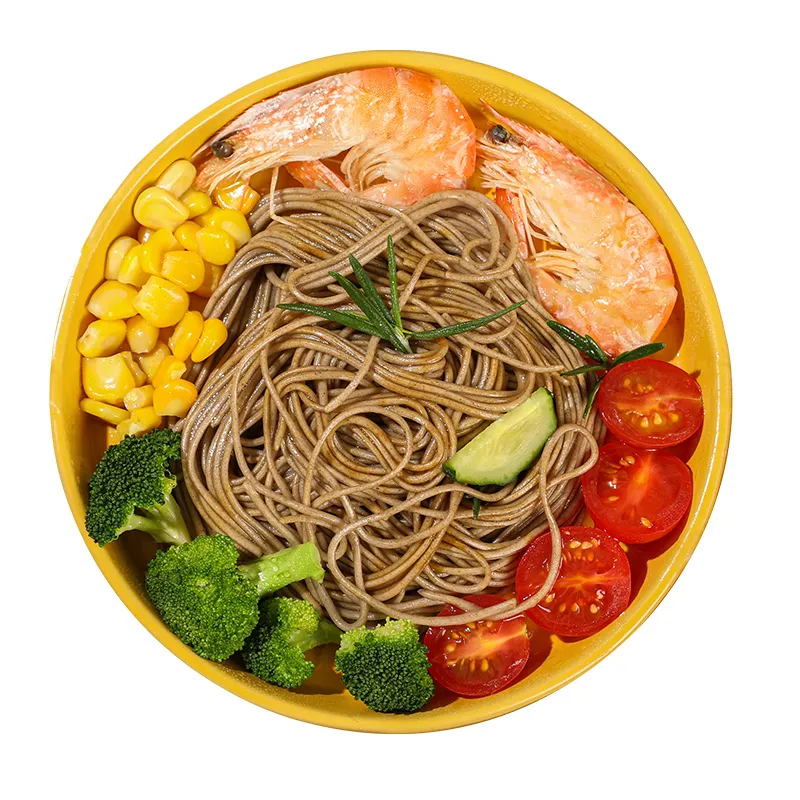soba noodles what are they
Soba Noodles What Are They?
Soba noodles are a traditional Japanese dish made from buckwheat flour, which distinguishes them from many other noodle types that are often made from wheat flour. The word ‘soba’ itself means ‘buckwheat’ in Japanese, although soba can sometimes be made from a mixture of buckwheat and regular flour. This unique differentiation in ingredients gives soba noodles not only their characteristic taste but also contributes to their nutritional value.
A Brief History
The origins of soba noodles can be traced back to the Edo period (1603-1868) in Japan, where they quickly gained popularity as a staple food. They were particularly favored in the cold climate of the mountainous regions of Japan, where buckwheat could be easily cultivated. As time progressed, soba noodles evolved from a regional specialty into a beloved dish enjoyed across Japan and worldwide today. Soba's cultural significance is notable, as it is often consumed during celebrations and festivals, particularly the New Year, symbolizing longevity and good health.
Ingredients and Nutritional Benefits
The primary ingredient in soba noodles is buckwheat, a pseudocereal packed with several health benefits. Unlike wheat, buckwheat is gluten-free, making soba a fantastic option for those with gluten sensitivities or celiac disease. It is also rich in essential nutrients, including protein, fiber, B vitamins, and antioxidants such as rutin, which has been found to improve circulation and reduce blood pressure.
Soba noodles have a unique nutty flavor, which is one reason why they stand out in various culinary applications. They can be served hot or cold, making them a versatile ingredient in many dishes, from stir-fries and soups to salads and sushi rolls. Additionally, the low glycemic index of buckwheat makes soba a great choice for those managing blood sugar levels.
soba noodles what are they

Culinary Uses
In Japan, soba noodles are enjoyed in myriad culinary forms. One popular way to serve soba is in a cold dish known as zaru soba, where the noodles are chilled and served on a bamboo mat with a dipping sauce called tsuyu. This dish is particularly refreshing during the hot summer months. Another traditional dish is kake soba, which features the noodles served in hot broth, often garnished with green onions, tempura, or other additions.
Soba noodles also lend themselves to a variety of international recipes. They can easily be integrated into stir-fries or salads, substituting wheat noodles in recipes to enhance their nutritional profile. Their adaptability makes them a valuable addition to not only Asian cuisines but also fusion plates that combine flavors from different cultures.
Making Soba Noodles
For those who wish to delve into making soba noodles at home, the process can be both rewarding and simple. Traditional soba noodle-making involves mixing buckwheat flour with a small amount of water and kneading the dough until it reaches the appropriate consistency. The dough is then rolled out thinly and cut into strands. Although it requires practice to achieve the perfect texture, the satisfaction of crafting your own soba can be well worth the effort.
Conclusion
Soba noodles represent more than just a meal in Japan; they are a symbol of cultural heritage, health, and versatility. Their unique taste and texture, combined with their numerous health benefits, have allowed them to maintain popularity both in traditional Japanese cuisine and in contemporary dishes around the globe. Whether served hot in a comforting bowl of soup or chilled with a light dipping sauce, soba noodles stand out as a delightful and nutritious choice. In a world increasingly leaning towards health-conscious eating, the appreciation for ingredients like buckwheat is sure to grow, making soba a permanent fixture on our plates.
-
Unleash Your Inner Chef with Delectable Italian Pasta CreationsNewsAug.01,2025
-
Savor Health and Flavor: Irresistible Soba Noodles for Sale Await!NewsAug.01,2025
-
Nourish Your Body with Premium Organic Ramen - A Culinary Delight AwaitsNewsAug.01,2025
-
Elevate Your Dishes with Our Exquisite Kinds of Egg NoodlesNewsAug.01,2025
-
Dive into Flavorful Convenience with Our Ramen OfferingsNewsAug.01,2025
-
Discover Exquisite Types of Naengmyeon and Chilled Soba NoodlesNewsAug.01,2025
-
Is Whole Wheat Pasta Healthy?NewsMay.30,2025
Browse qua the following product new the we

















































































































